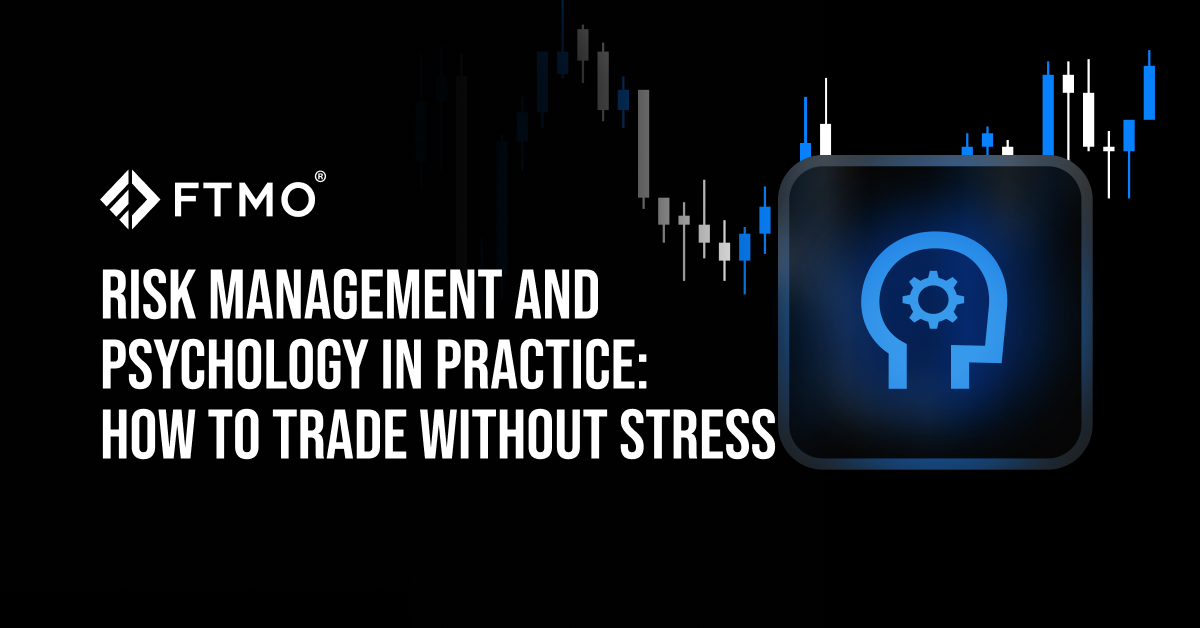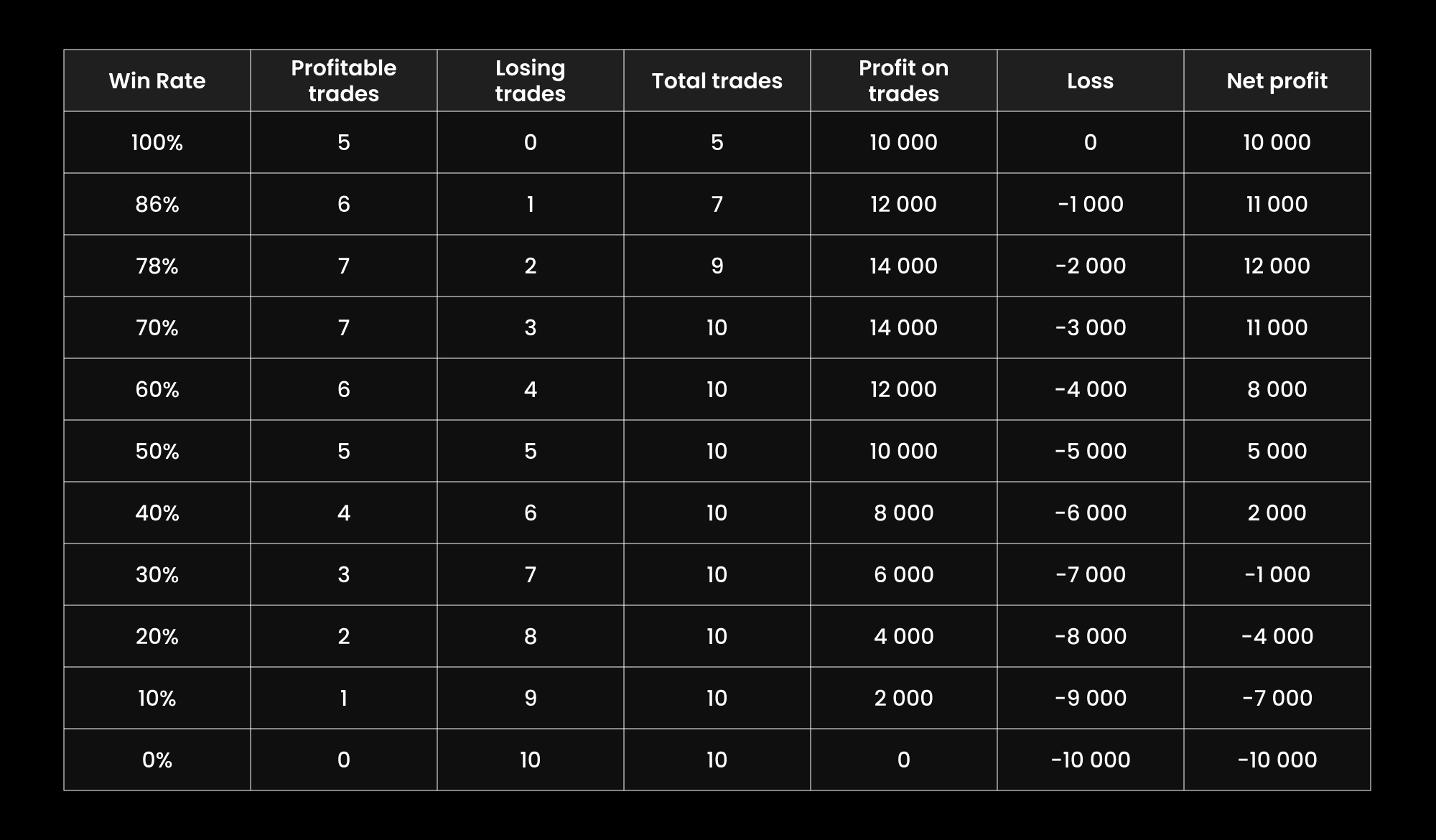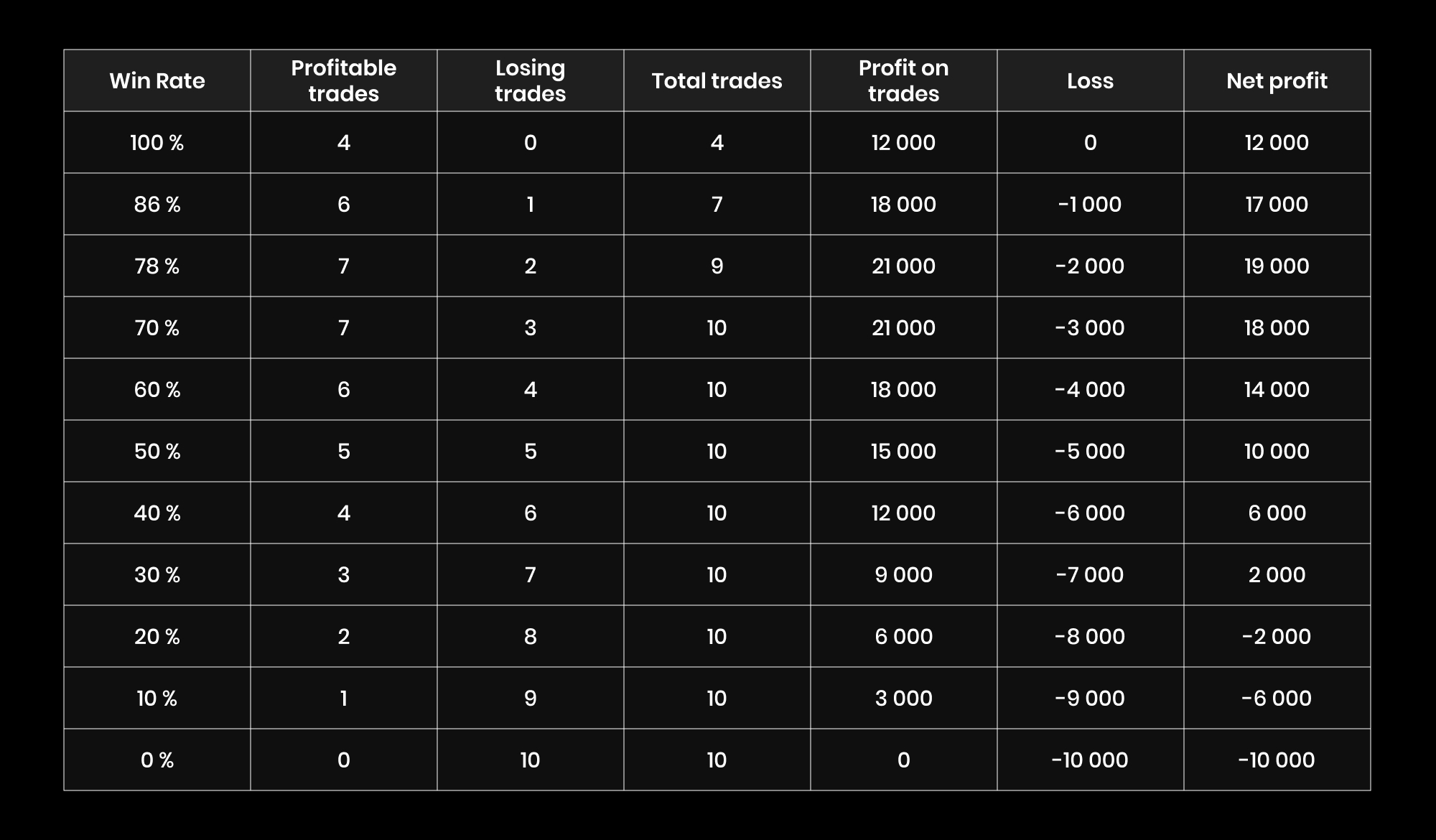
Risk management and psychology in practice: How to trade without stress
Successfully navigating the challenge of prop trading firms requires more than just good market judgment. A precise strategy, thoughtful risk management and strong discipline are key. In this article, we'll look at a practical guide on how to manage risk when trading a prop firm account with a capital of $100,000.
We'll demonstrate models with different reward/risk ratios (2:1 and 3:1), calculate what win rate is needed to reach the goal of +$10,000, and compare the effectiveness of each approach. The goal is to minimise the number of trades, keep the risk under control, and at the same time meet the challenging conditions of the challenge. This article is intended for both novice prop traders and more advanced traders looking for a structured plan.
Objectives of the strategy
The primary goal is to achieve a profit of $10,000 with well-defined risk and consistent money management.
Basic parameters
- • Trading account: 100 000 USD.
- • Profit Target: 10 000 USD (10% of the accoun).
- • Maximum Daily Loss: 5 000 USD.
- • Maximum Loss: 10 000 USD.
- • Risk per trade: 1 % of the account = 1 000 USD.
- • Reward-to-Risk Ratio (RRR): 2:1.
Risk Management Plan
- • Maximum USD 1,000 risk per trade (1% of the account).
- • Daily Stop Loss: max 2 - 3 losing trades, i.e. 2 000 - 3 000 USD.
- • If the day ends in the negative, followed by a trading halt for a minimum of 24 hours.
- • Maintain a fixed reward/risk ratio.
- • Always defined SL/TP before entering a trade.
- • Do not trade off plan or under the influence of emotions.
Table of minimum number of trades by win rate (RRR 2:1, risk 1,000 USD, max 10 trades)

Table of minimum number of trades by win rate (RRR 3:1, risk 1 000 USD, max 10 trades)

These tables operate with a maximum limit of 10 trades and assume that profitable and losing trades alternate according to the specified success rate. The goal is to determine the minimum number of trades required to achieve a profit of USD 10,000 or to avoid exceeding the maximum allowable loss.
Psychology and discipline
- • Sticking to the plan is key: the account is business, not personal.
- • Pause for 24 hours after 3 losing trades in a row.
- • Keeping a daily diary and evaluating trades.
- • Awareness of long-term goal: quality > quantity.
- • Visualising scenarios before the trading session.
Comparison of RRR 2:1 vs RRR 3:1
- • RRR 3:1 allows to achieve the goal with fewer profitable trades and lower trade success rates.
- • For example, with an RRR of 3:1, 5 profitable trades out of 10 trades (50% trade success rate) is enough to make a profit of $10,000.
- • On the other hand, with an RRR of 2:1 and the same number of trades (10), a minimum of 70% trade success rate is required.
- • An RRR of 3:1 is more advantageous in terms of potential but can be more demanding on psychology and patience as the Stop Loss is hit more often.
To successfully meet the challenge with a 2:1 RRR, the desired profit can be reached with a relatively small number of trades—under ideal conditions, just 5 profitable trades without any losses are sufficient. However, if the success rate drops below 40%, achieving the desired result becomes significantly more challenging. With a 50% success rate, 17 trades might be necessary, while at a 60% success rate, only 11 trades may suffice.
It is important to note that the total number of trades is not critical - consistency and adherence to the risk/reward ratio (RRR) is essential. Results are a reflection of long-term success; not how many times we enter the market. If we follow a quality trading approach with solid risk management, the number of trades can be higher - and still fully in line with the plan and objective.
About FTMO
FTMO has developed a two-step evaluation process to find trading talents. Upon successful completion, you may be eligible for an FTMO Rewards Account with a balance of up to $200,000 in simulated funds. How does it work?














